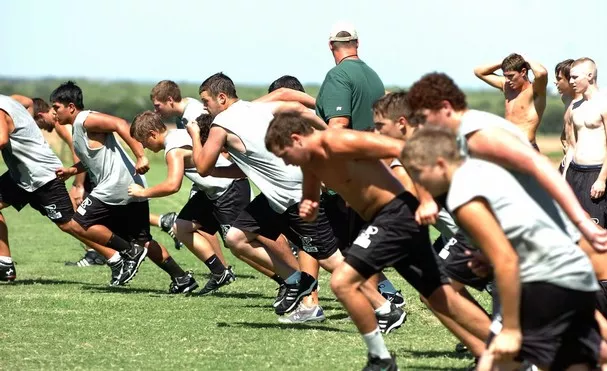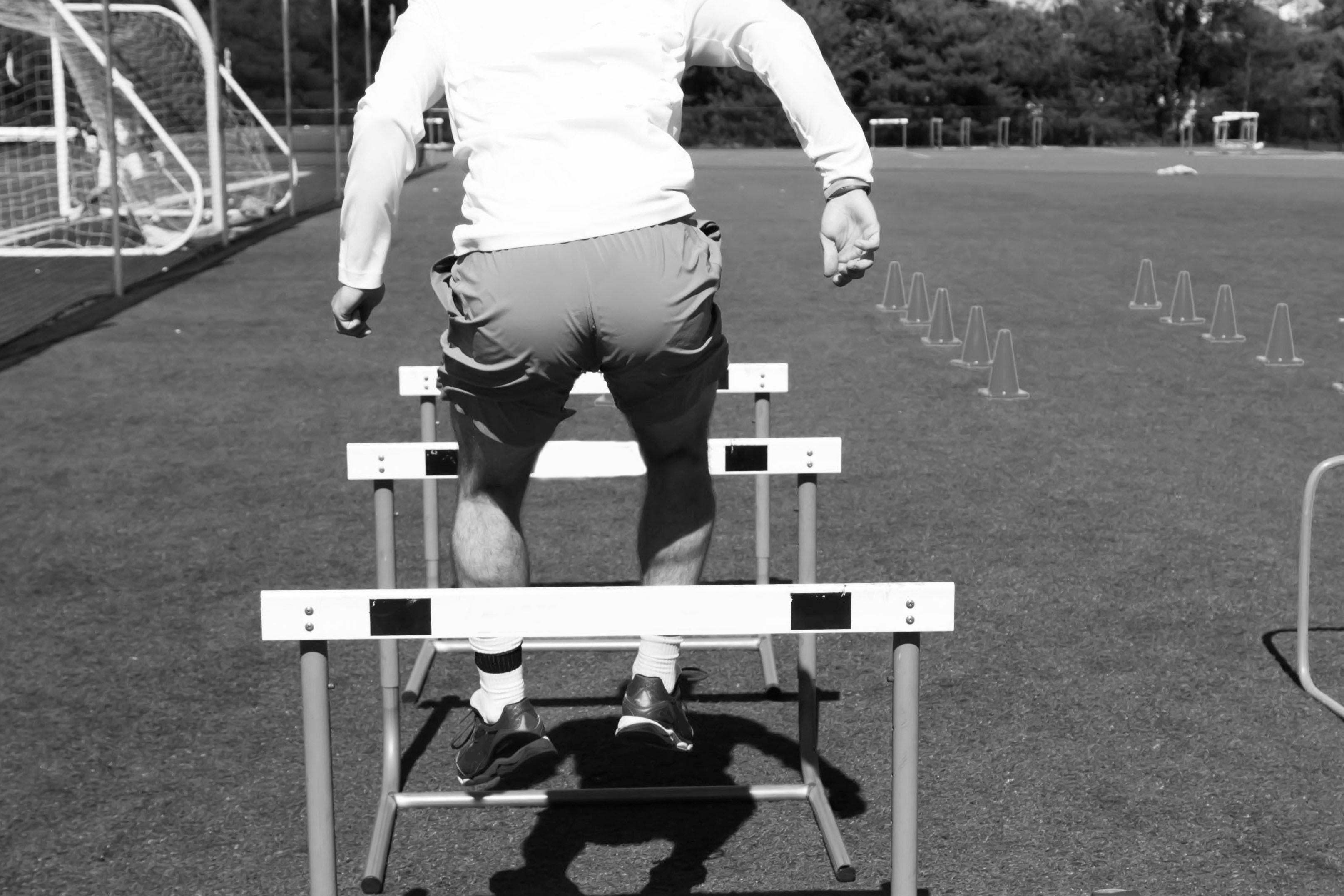As high schools continue to recognize the importance of strength and conditioning as a key component of a successful athletics program, the hiring of strength and conditioning coaches for high schools continues. Many coaches find themselves in the position of creating a physical education program for the school along with the strength and conditioning program. The needed physical education program may be geared toward high school only or it may extend to cover Kindergarten-12th grade. It is also important that the strength and conditioning program and P.E. program mesh well; this may be tricky to achieve especially if you are working with limited staffing. As with the creation of any new program, it will be time consuming and that is not a negative thing. Doing anything well requires hours of time dedicated to intentional, thoughtful, and thorough planning.
Last fall I began a new job at a school that was looking to do a complete overhaul to fitness throughout the school. They were ready to revamp the strength and conditioning available to athletes and to create a physical education curriculum that flows seamlessly from elementary to high school. As I finish up my first school year here and evaluate what all has been accomplished, I am thankful for the progress made and the tremendous support from the school’s administration. Looking forward, I see that we still have ample room for progress in the coming years. Building a solid program takes time.
How many times as strength coaches have we all wished that the athletes would have learned a certain movement pattern earlier so we can progress? I began my coaching career at the college level of strength and conditioning and every year I found myself “wishing” as the freshmen athletes reported. I started making mental lists of what I wished athletes would learn in high school so that they could report to college athletics with strong foundational weightlifting and movement patterns. When I did make the jump from being part of a college strength staff to being on my own as a high school strength and conditioning coach, I had the opportunity to teach the athletes everything that I had wished they would learn in high school. I had my plan in place, but soon after the freshmen athletes reported to summer strength training the wishing started to creep back into my thoughts. I noticed that many of the athletes had a lack of flexibility and this hindered them from getting into proper positions such as hip hinge and deep squat. I wished that the kids had learned correct movement patterns at an earlier age before lack of flexibility became an issue. If positions are taught beginning at the elementary age, by the time the students are in high school the correct movement patterns could become automatic.
Being able to influence or create a physical education curriculum gives coaches an opportunity to stop wishing. The program can be designed to introduce positions at the elementary age and progress piece by piece throughout middle school and high school. I’ve had the opportunity this school year to create a school-wide program design just like that. This article is going to depart from the typical information shared about strength and conditioning program design such as whether I use linear or undulated periodization, if I’m an Olympic or Powerlifting guy, or how I use velocity based training, triphasic training or APRE in my program. Instead, I am going to share with you how we set up our physical education and strength and conditioning curriculum for K-12th grade.
When developing a school-wide program design, it is helpful to keep in mind 2 angles… "where is your program now?" and "where do you want your program to be?" The first thing I did was take inventory of the P.E. and strength and conditioning equipment that the school already owned. From there, I made a list of what other pieces of equipment were needed. After that, I started working on the overall vision and the specific curriculum for the P.E. program. Then I contacted equipment companies and put together a quote for the equipment needed to support the vision I had for the P.E. program. I compiled all the information and presented to the administration the vision, equipment desired, curriculum, and budget needed to support the installation of the program. I presented specific information with details supporting where we are now and where we want to be. By having this information, the administration was able to see the realistic cost and intentional plan to get us to our goal.
When creating the P.E. curriculum, I kept in mind how our school does a fantastic job preparing the students academically for college. I wanted to make sure that we offer a P.E. curriculum that strives to equip our students with the tools necessary to continue a heathy lifestyle throughout college and adulthood. The program created is divided into 3 phases: an elementary phase, a middle school phase, and a high school phase.
At the elementary level, students will begin their Fitness journey by Building the Foundation. The students begin learning the fundamental skills and concepts needed to be successful in a variety of activities. Kindergarten - 4th graders will focus on body awareness through movement that utilizes hopping, skipping, and jumping with rhythm and balance. The students will progress to gymnastics-based exercises such as rolling and tumbling type movements. These movements will be practiced in a warm-up at the start of class. Then the students will learn how to participate in structured games. This will help the students learn how to acknowledge and follow rules in game like situations and team playing with others.
The journey continues in middle school where students will begin Sampling the Menu. The students will learn specialized skills and concepts in a variety of activities. The middle school phase is designed to adjust with the students as they mature from early middle school to later middle school.
5th-6th Grade - The focus is learning movement through structured drills and play. Each Wellness class will begin with a structured dynamic warmup and flexibility drills. A dynamic warmup is a series of movements that are specifically designed to increase the body temperature, increase total body mobility and prepare the nervous system for a sport like activity. During the dynamic warm up, the coach will introduce basic running, skipping and agility drills. The drills may include high knees, arm swings, stiff leg bounds, skips for height/distance, proper jumping and landing mechanics, and proper body position when changing directions.
After the structured warmup, a game may be introduced. It is important during the game that the coach continues to monitor and correct the movements that were practiced during the warmup. Fifth and 6th grade is a great time to start introducing cognitive type games where students have to think and make decisions that will determine their movements. Examples are Medicine Ball Tic Tac Toe and Numbered Box Drills.
Also, during 5th and 6th grade, the students will be introduced to body weight exercises. Examples are push ups, pull ups, sit ups, and inverted rows. Body weight exercises help to create an awareness in the student of how the body works and creates a natural progression to more complex exercises as the student ages.
7th-8th Grade – Students continue with the basic dynamic warmup and progressively begin increasing the quantity and types of jumps. This is a great time to introduce students to multi joint weightlifting exercises. These exercises help to teach the student to move and use the body as one unit. It’s important that these exercises are learned with wooden dowels, PVC pipes or a 15-lb. training bar to simulate a bar before progressing to light weights. Body weight exercises should continue to be progressed by adding more reps or a weighted vest. The students will also focus on overall work capacity with body weight exercises. This can be done with circuit training. An example is for the student to sprint to the corner of the gym to perform a body weight exercise and then sprint to another corner for a different exercise. It is still important during this time to periodically reward the students with games where they can work on the skills they have practiced in game like situations.
The final phase takes place during the high school years, where students will continue their fitness journey by Choosing a Path. High School P.E. will be split into two tracks, Performance and Physical, in order to give the students a tailored experience. Performance track will be a fitness program that is geared towards the sports activity. Physical track will be a fitness program that is geared towards overall general physical fitness.
The Performance track will be for student athletes and will focus on overall athletic development of the student athlete. This will be accomplished by teaching proper movement patterns through running, jumping, and movement drills along with multi joint weightlifting movements such as cleans, squats and pressing movements. The Performance track will be split into 2 sections, In-Season and Off-Season. The In-Season athletes will perform their weightlifting along with flexibility and mobility programs to help with in-season athletic performance. The Off-Season athletes will perform agility training during the the P.E. period and perform their weightlifting and conditioning after school.
The Physical track will focus on general physical fitness for the non-athlete. Throughout the year the student will be introduced to dynamic mobility and flexibility movements, proper running mechanics, bodyweight and weighted exercises, conditioning drills and intramural type games.
The end goal stays the same regardless if you are in the Performance track or the Physical track, it is to prepare our students physically for college. We want our students to enter college able to confidently put together a workout program and know how to use the equipment in the student rec center. If our students are blessed enough to participate in collegiate athletics, we expect them to report to the college strength coach in great shape knowing how to perform the drills, exercises and weightlifting movements with excellent technique.
In my 17 years as a strength and conditioning coach, I have learned that there is not one “right” way to do anything. Programs are adjusted and tweaked throughout the years. It is important that coaches are willing to learn from each other and to share what we have learned. I would love to hear how others have set up their programs or to talk with anyone who might have questions about our school-wide program design.

Subscribe to our blog
Subscribe to receive the latest blog posts to your inbox every week.
Related posts

Challenges Faced by High School Strength Coaches

10 Things High School Strength Coaches Need to Do Every Day
